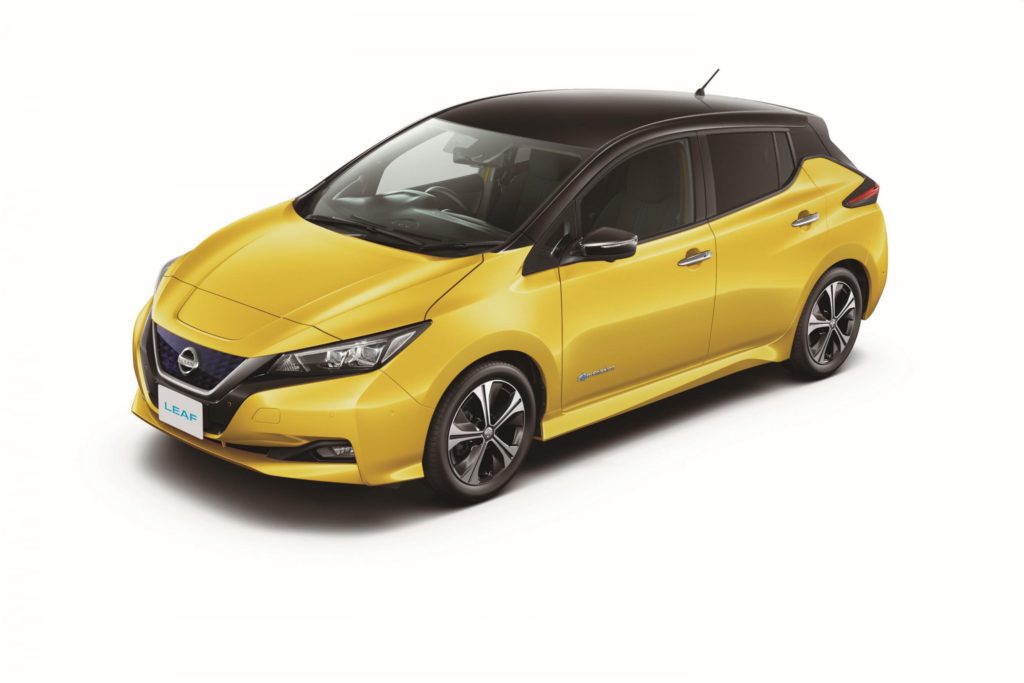Nissan launches new Leaf and adds technology to keep market-leading position
06 September 2017

06 September 2017
Nissan has launched the second generation model of the class-leading Leaf, bestowing the electric vehicle (EV) with both a longer range and some autonomous technology.
The redesigned Leaf, with a style that brings it in line with the company’s hatchback range, will now achieve 249 miles on a full charge, up from 174 miles seen in the current model. Nissan CEO Hiroto Saikawa believes this is enough to eliminate range anxiety, which would give the model more appeal to those for whom this is enough to put them off buying an EV.
The new Leaf will launch in Europe in January 2018, with a performance-oriented version coming onto the market in April, and a premium edition arriving afterward.
The updated EV also adds a range of autonomous technologies and connected car functions, in order to move the Leaf further beyond its competitors, in what is becoming an increasingly crowded market. With EV launches expected from Daimler and Audi, together with more models coming from Ford and Toyota also developing for the sector, Nissan need to develop to ensure they do not rest on their laurels.
′To call the new Nissan Leaf just an EV does not tell the full story of the ingenuity behind the vehicle nor does it represent its massive potential,’ said Daniele Schillaci, Nissan’s Head of Global Marketing and Sales.
′The new Nissan LEAF drives Nissan Intelligent Mobility, which is the core brand strategy for Nissan’s future,’ said Saikawa. ′The new Nissan LEAF, with its improved autonomy range, combined with the evolution of autonomous drive technology, such as ProPILOT Park and the simple operation of the e-Pedal, strengthens Nissan’s EV leadership, as well as the expansion of EVs globally. It also has the core strengths that will be embodied by future Nissan models.’
The Leaf gets an updated edition of Nissan’s ProPILOT autonomous driving system as well as a new e-Pedal technology that turns the accelerator pedal into a combined accelerator-brake. However, the company states that equipment and technologies will vary by market.
The ProPILOT system allows the Leaf to drive itself in stop-and-go traffic and in single-lane road journeys, even around corners. But Nissan is adding a new push-button self-parking function, which the manufacturer says will allow the car to self-park in parallel, angled, front-in and straight-back spaces by taking over the accelerator, braking and steering.
The e-Pedal turns the accelerator into a brake and throttle, allowing one-pedal driving. Push down, it speeds the car ahead. Lift off the gas, and the car will slow to a complete stop even on hills. Nissan says it can cover 90% of a driver’s needs, relieving drivers of the stress of shifting back and forth from the brake and accelerator. The technology uses motor braking and standard friction braking to slow the car. It is an upgrade of a similar system used in the Nissan Note e-Power, a hybrid vehicle sold in Japan.
Global sales of the new Leaf should be at least double that of the outgoing model, and maybe triple, according to Saikawa. Nissan sold 47,000 Leafs worldwide last year, implying sales of at least 94,000 units and possibly as high as nearly 150,000. ′The minimum, minimum line that I said is double the sales and it could be triple,’ he said.
Photograph courtesy of Nissan